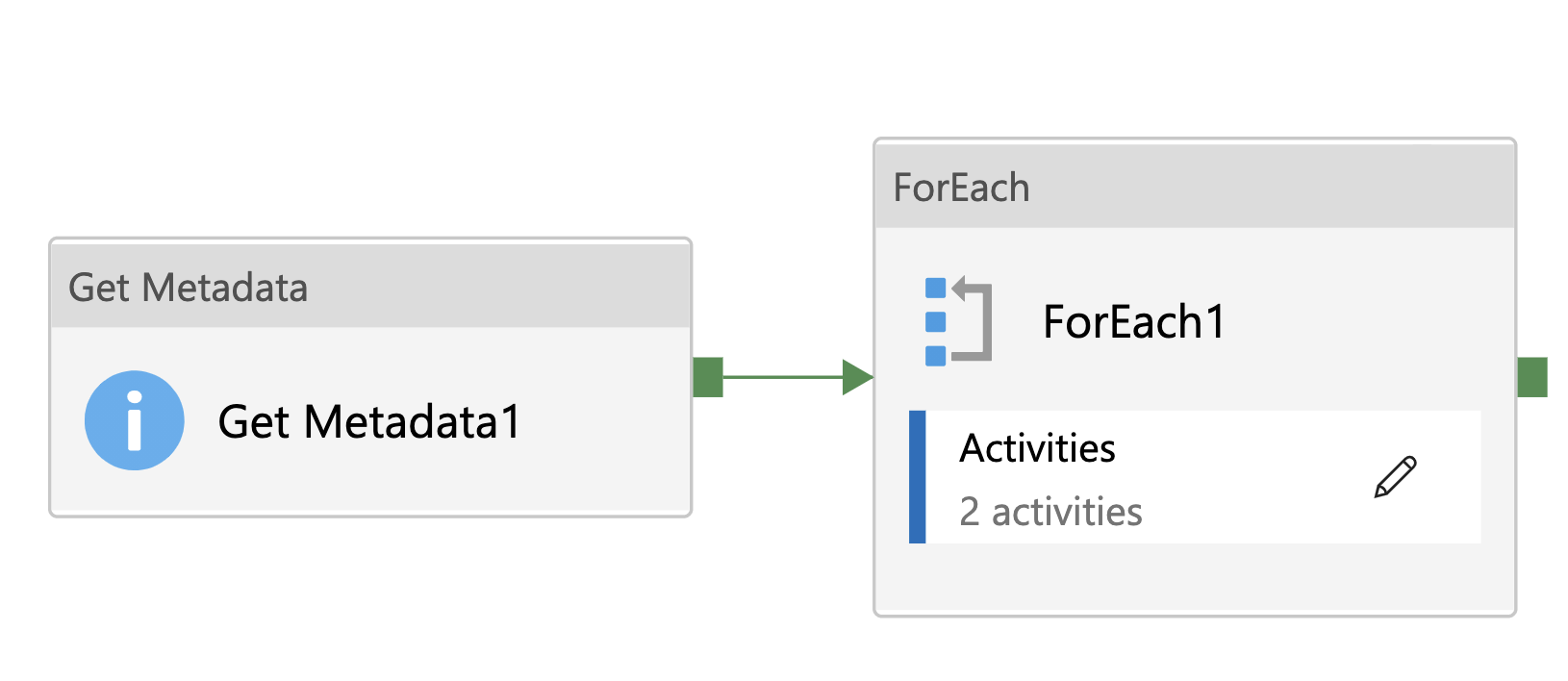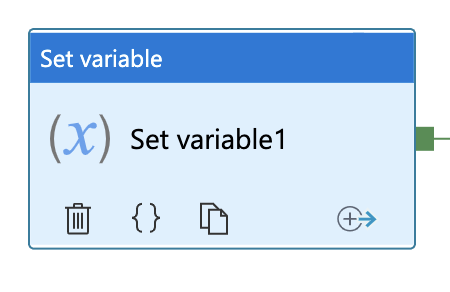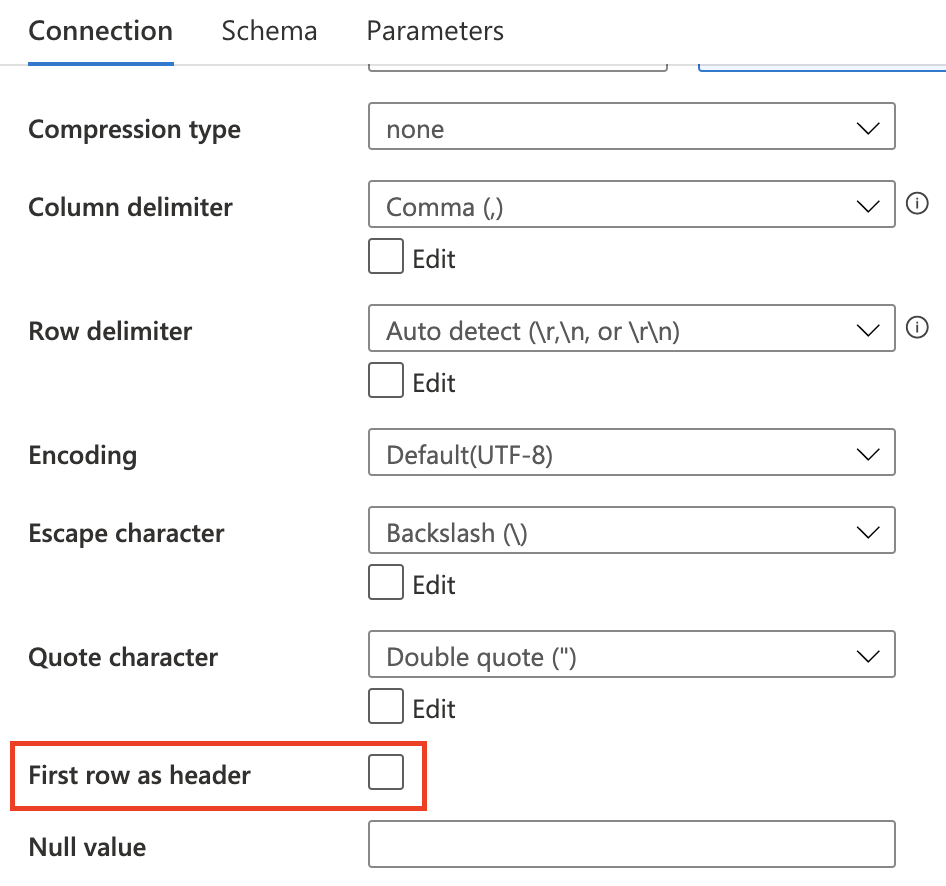Recently I'm working in Azure to implement ETL jobs. The main tool is ADF (Azure Data Factory). This post show some solutions to resolve issue in my work.
Task1#
Process CSV files and merge different system files into one file
- Source: CSV files with filename format (abcd_yyyymmdd_uuid.csv), where abcd is system id.
- a_20180101_9ca2bed1-2ed0-eaeb-8401-784f43755025.csv
- a_20180101_cca2bed1-aed0-11eb-8401-784f73755025.csv
- b_20190202_ece2bed1-2ed0-abeb-8401-784f43755025.csv
- c_20180101_ada2bed1-2ed0-22eb-8401-784f43755025.csv
- Sink: yyyymmdd.csv
- 20180101.csv
- 20190202.csv
ADF Pipeline#
Activities#
Get Metadata#
- Input: source directory/parameters
- Output: metadata of each object
Get Metadata activity iterate source directory to obtain each object. The most important one is Argument 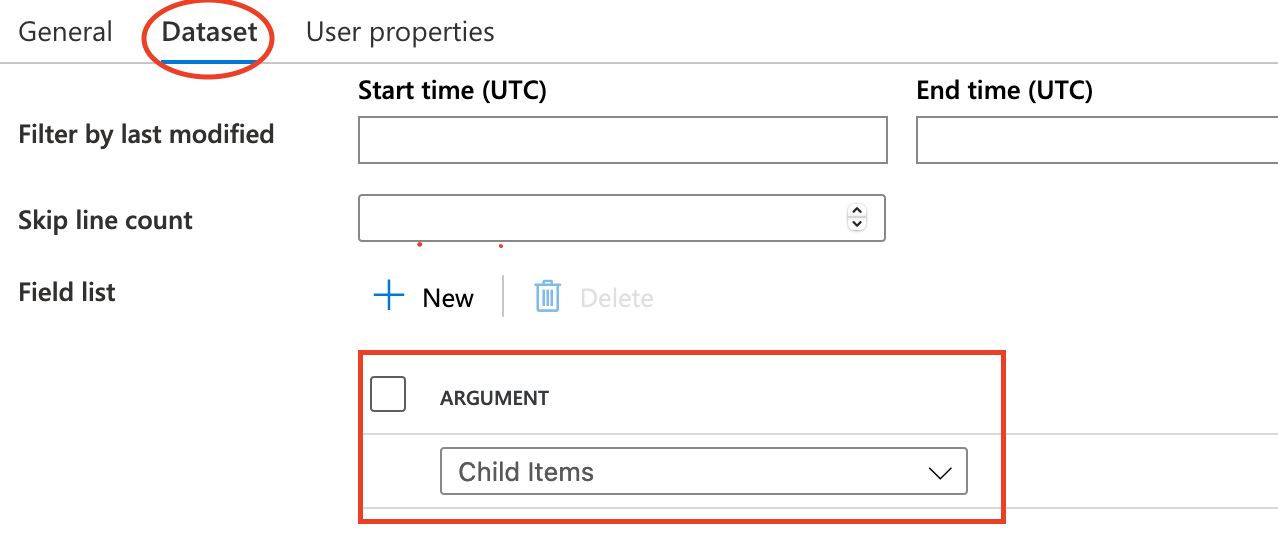
ForEach#
- Input: output of Get Metadata
- Output: None
ForEach activity is used to process each object in source direcoty.
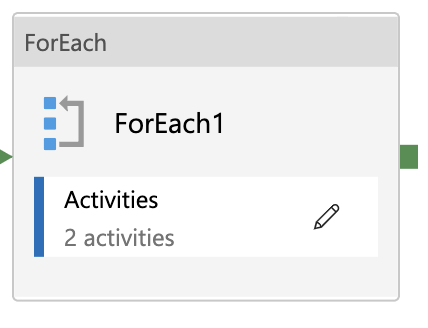
Set Variables#
It's convenient to predefine a value used in next step.
Dataflow#
The dataflow merge all files with same date, and source1 and sink are the same destination. So, initially source1 is empty and check this options. 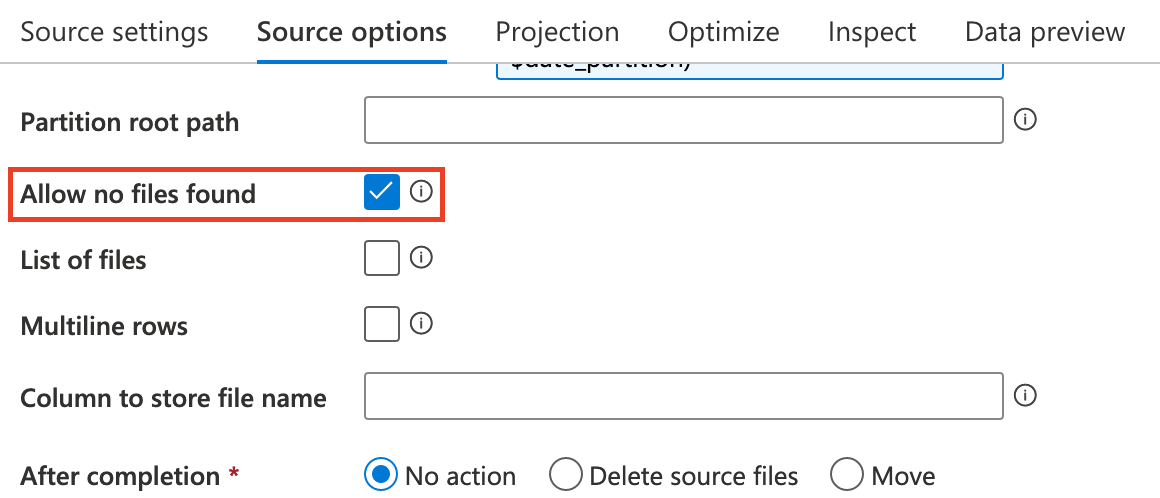
The only configuration in Sink is the File name option 
Aggregation of filenames#
The last problem in dataflow is how to merge files with same date in dataflow, which means we firstly find out all these files. The solution to this problems is regex expression.
Task2#
Generally CSV file has a header and we can process it easily in ADF. However, a special case is a large CSV file has multiple different headers and we need to automatically split it into regular csv files with headers respectively.
-
Sample data: > h1,h1_col1,h1_col2,h1_col3 > h2,h2_col1,h2_col2,h2_col3,h2_col4,h2_col5 > h3,h3_col1,h3_col2 > h1,h1_row1_1,h1_row1_2,h1_row1_3 > h1,h1_row2_1,h1_row2_2,h1_row2_3 > h1,h1_row3_1,h1_row3_2,h1_row3_3 > h2,h2_row1_1,h2_row1_2,h2_row1_3,h2_row1_4,h2_row1_5 > h2,h2_row2_1,h2_row2_2,h2_row2_3,h2_row2_4,h2_row2_5 > h2,h2_row3_1,h2_row3_2,h2_row3_3,h2_row3_4,h2_row3_5 > h2,h2_row4_1,h2_row4_2,h2_row4_3,h2_row4_4,h2_row4_5 > h2,h2_row5_1,h2_row5_2,h2_row5_3,h2_row5_4,h2_row5_5 > h3,h3_row1_1,h3_row1_2 > h3,h3_row2_1,h3_row2_2
-
Explanation:
- header format: header name, columns names
- 3 headers : h1, h2 and h3
- the 1st column of each row is header name and rest of columns are values
-
Output:
- h1 file > h1_col1,h1_col2,h1_col3 > h1_row1_1,h1_row1_2,h1_row1_3 > h1_row2_1,h1_row2_2,h1_row2_3 > h1_row3_1,h1_row3_2,h1_row3_3
- h2 file > h2_col1,h2_col2,h2_col3,h2_col4,h2_col5 > h2_row1_1,h2_row1_2,h2_row1_3,h2_row1_4,h2_row1_5 > h2_row2_1,h2_row2_2,h2_row2_3,h2_row2_4,h2_row2_5 > h2_row3_1,h2_row3_2,h2_row3_3,h2_row3_4,h2_row3_5 > h2_row4_1,h2_row4_2,h2_row4_3,h2_row4_4,h2_row4_5 > h2_row5_1,h2_row5_2,h2_row5_3,h2_row5_4,h2_row5_5
- h3 file > h3_col1,h3_col2 > h3_row1_1,h3_row1_2 > h3_row2_1,h3_row2_2
Dataflow#
The dataset used in source and sink must uncheck this
DerivedColumn#
Because no header is in the dataset, ADF automatically assign a column name to each one. The column name format is _colindex_
In this task the header column is _col0_ and we can map this one to another name like filename 
Sink#
This dataflow will automatically split composite CSV file into different files and save them at container root path. To save them at another directory, you can add folder name to the mapping column name in DerivedColumn activity.
Trigger#
We use blob event trigger to implement automation. Once uploading a new file is done, these pipeline will process it automatically. How to create event trigger
Two values in trigger are used by pipeline - @triggerBody().folderPath : /container name/folder/ - @triggerBody().fileName : blob name
Pandas Processing#
import pandas as pd
import csv
df = pd.read_csv('sample.csv', sep='^([^,]+),',engine='python', header=None)
df.drop(df.columns[0], axis=1, inplace=True)
heads = df[df.columns[0]].unique()
d = dict(tuple(df.groupby(df.columns[0])))
for h in heads:
outputfile = d[h]
outputfile.drop(outputfile.columns[0], axis=1, inplace=True)
outputfile.to_csv('{0}.csv'.format(h), sep=' ', index=False, header=False)
